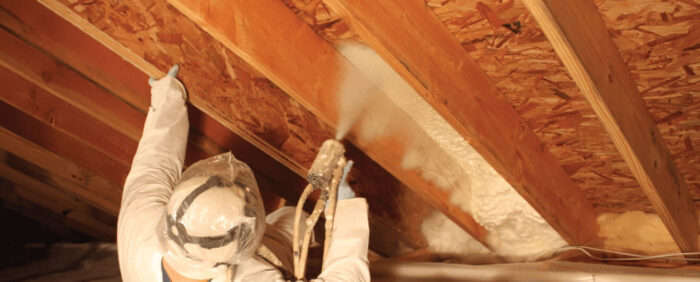
Frequently Asked Questions
You’ve come to the right place to find answers to your insulation questions.
Q: How much will insulation cost?
A: The cost of insulating your home will vary depending on the size and style of house, the insulating products used, and the strategies implemented (unvented attic, conditioned crawl etc.).
Q: If foam and cellulose are so good, why do most people use fiberglass?
A: Most people use batt insulation because they aren’t given the option to use something better, and aren’t aware that upgrading your insulation system at the construction stage will usually completely pay for itself in the first 1-3 years.
Q: Does cellulose settle?
A: Very little. Cellulose insulation is now treated with a dry adhesive which is activated by water during installation. This adhesive stabilizes the product to minimize settling.
Q: What are conditioned crawlspaces?
A: A conditioned crawl space uses insulation on the walls and a sealed vapor barrier instead of the typical under floor insulation to create an energy efficient space under your home.
Conditioned crawl spaces bring the HVAC equipment, air handler, and ducts into conditioned space. Any duct leakage is lost into the building envelope. Conditioned crawl spaces eliminate moisture intrusion, control relative humidity, and improve indoor air quality. By creating a mini basement, the foundation walls are insulated instead of the crawl ceiling. Conditioned crawl spaces require supply air only (no return), 1 cfm per 50 square feet of floor space.
Q: What are unvented attics?
A: A conditioned attic uses insulation on the underside of your roof deck and gable end walls instead of the typical flat ceiling insulation to create an energy efficient space on top of your home. Read more about unvented attics.
Q: Will my builder take care of insulation?
A: Yes, but most builders insulate just enough to satisfy local code requirements. Remember that your builder will not be paying your power bills for the years to come, YOU will.
Q: Is satisfying building code good enough?
A: No. Building codes are set by required R-value levels which only account for one type of heat loss (conduction). Local building codes have no requirements on a product’s performance and will in no way be an indication of how energy efficient your home will be.
Q: Does the house need to breathe?
A: Yes, all houses need to breath in order to control indoor moisture levels created from cooking, showering, breathing etc. Most houses breath by accident through a leaky and inefficient building envelope, and the use of passive ventilation practices. When using high performing insulating products and eliminating passive ventilation, the use of an ERV (energy recovery ventilator) is used to maintain optimum indoor humidity levels and improve indoor air quality.
Q: What is R-value?
A: R-Value is a laboratory measurement that measures only one heat transfer mechanism (conduction) and does not effectively measure all methods of heat transfer that occur in your home: convection, conduction, and radiation. R-value alone will not tell you how well the insulation will perform in your home.
Q: Do I just need high R-value?
A: No. R-value is the measurement of only 1 type of heat loss (conduction), which is the transfer of heat through a solid material. R-value does NOT account for radiant heat loss or covective heat loss, which is the transfer of heat by random air leakage and accountable for up to 60% of a home’s heat loss.
Q: How can the foam be better if it has less R-value?
A: Foam insulation is spray applied to form a custom seal to any and all framing obstacles, eliminating random air leakage (convection) which accounts for up to 60% of a home’s heat loss.
Q: How does Icynene make it possible to eliminate passive ventilation in an attic?
A: Passive ventilation systems are used to allow potential condensation a way out of the structure. Condensation can occur as result of a leaky building envelope, which allows conditioned indoor air to contact unconditioned outdoor air. Icynene is an air barrier which eliminates air infiltration, removing the ability for both air masses to come into contact with one another and eliminating its potential to form condensation.
Q: Are there rebates available for installing insulation?
A: Yes. Financial incentives are currently being offered in many states for the purchase and installation of insulation. Choose your state from the list below to find out about financial incentives in your area.
Request Free Estimate
Request Free Estimate
"*" indicates required fields

